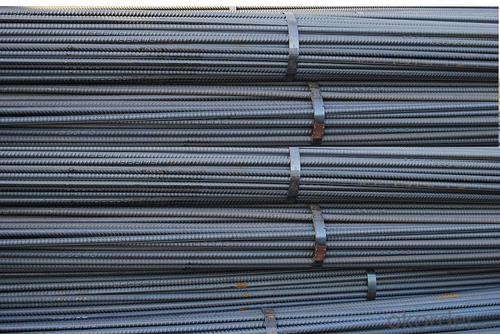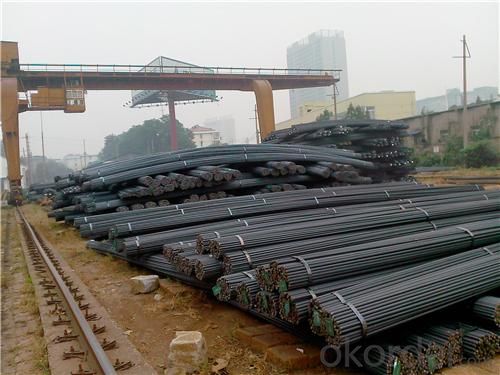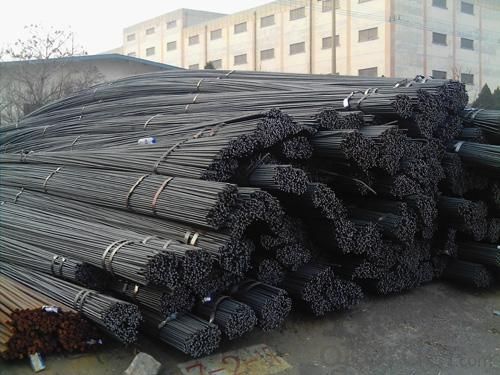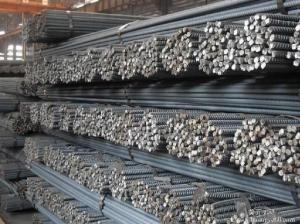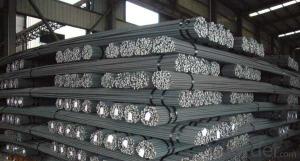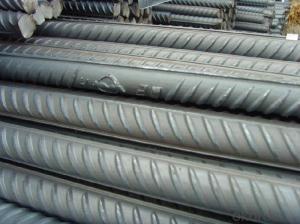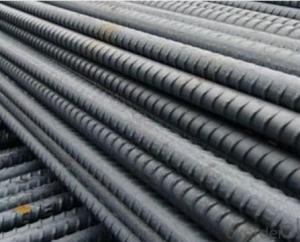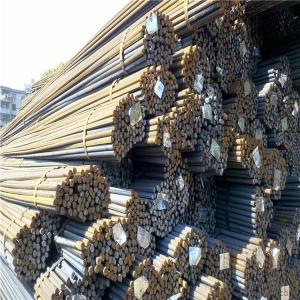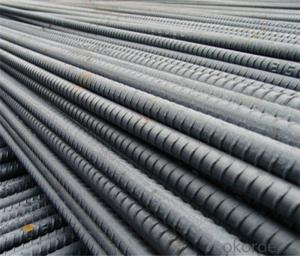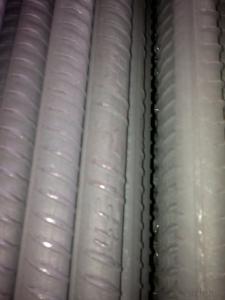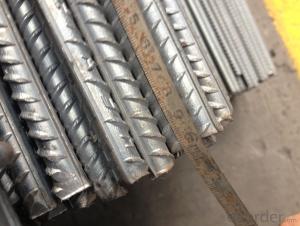GB Standaerd deformed steel bar for construction
- Loading Port:
- Tianjin
- Payment Terms:
- TT or LC
- Min Order Qty:
- 25 m.t.
- Supply Capability:
- 100000 m.t./month
OKorder Service Pledge
OKorder Financial Service
You Might Also Like
Product Description:
OKorder is offering GB Standaerd deformed steel bar for construction at great prices with worldwide shipping. Our supplier is a world-class manufacturer of steel, with our products utilized the world over. OKorder annually supplies products to European, North American and Asian markets. We provide quotations within 24 hours of receiving an inquiry and guarantee competitive prices.
Product Applications:
GB Standaerd deformed steel bar are ideal for structural applications and are widely used in the construction of buildings and bridges, and the manufacturing, petrochemical, and transportation industries.
Product Advantages:
OKorder's deformed steel bar are durable, strong, and resist corrosion.
Main Product Features:
· Premium quality
· Prompt delivery & seaworthy packing (30 days after receiving deposit)
· Corrosion resistance
· Can be recycled and reused
· Mill test certification
· Professional Service
· Competitive pricing
Product Specifications
Deformed bar is widely used in buildings, bridges, roads and other engineering construction. Big to highways, railways, bridges, culverts, tunnels, public facilities such as flood control, dam, small to housing construction, beam, column, wall and the foundation of the plate, deformed bar is an integral structure material. With the development of world economy and the vigorous development of infrastructure construction, real estate, the demand for deformed bar will be larger and larger..
Packaging & Delivery of Deformed Steel Bar:
Packaging Detail: products are packed in bundle and then shipped by container or bulk vessel, deformed bar is usually naked strapping delivery, when storing, please pay attention to moisture proof. The performance of rust will produce adverse effect.
Each bundle weight: 2-3MT, or as required
Payment term: TT or L/C
Delivery Detail: within 45 days after received advanced payment or LC.
Label: to be specified by customer, generally, each bundle has 1-2 labels
Trade terms: FOB, CFR, CIF
Deformed Steel Bar in Coil
Produce Line of Deformed Steel Bar
Note:
1. Our products are produced according to national standard (GB), if not, supply according to national standards (GB) or agreement as customer required.
2. Other Grade and Standard Deformed Steel Bar we can supply:
Grade: GR40/GR60, G460B/B500A/B500B/B500C,BST500S
Standard: ASTM, BS, DIN
The Minimum Order Quantity of these products is high, and need to be confirmed.
3. We can not only supply Deformed Steel Bar; if you need anything about building materials, please contact us for further information.
Deformed Steel Bar in testing
Deformed bar is widely used in buildings, bridges, roads and other engineering construction. Big to highways, railways, bridges, culverts, tunnels, public facilities such as flood control, dam, small to housing construction, beam, column, wall and the foundation of the plate, deformed bar is an integral structure material. With the development of world economy and the vigorous development of infrastructure construction, real estate, the demand for deformed bar will be larger and larger..
Packaging & Delivery of Deformed Steel Bar:
Packaging Detail: products are packed in bundle and then shipped by container or bulk vessel, deformed bar is usually naked strapping delivery, when storing, please pay attention to moisture proof. The performance of rust will produce adverse effect.
Each bundle weight: 2-3MT, or as required
Payment term: TT or L/C
Delivery Detail: within 45 days after received advanced payment or LC.
Label: to be specified by customer, generally, each bundle has 1-2 labels
Trade terms: FOB, CFR, CIF
Deformed Steel Bar in Coil
Produce Line of Deformed Steel Bar
Note:
1. Our products are produced according to national standard (GB), if not, supply according to national standards (GB) or agreement as customer required.
2. Other Grade and Standard Deformed Steel Bar we can supply:
Grade: GR40/GR60, G460B/B500A/B500B/B500C,BST500S
Standard: ASTM, BS, DIN
The Minimum Order Quantity of these products is high, and need to be confirmed.
3. We can not only supply Deformed Steel Bar; if you need anything about building materials, please contact us for further information.
Deformed Steel Bar in testing
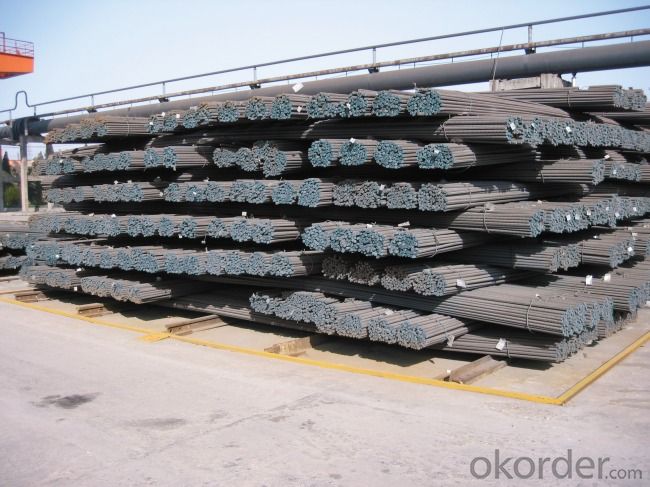
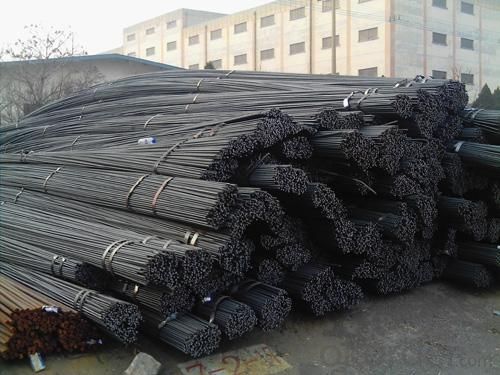
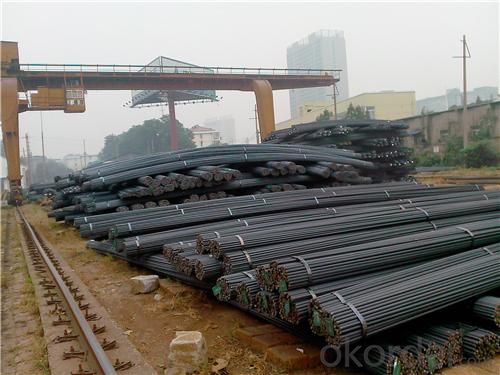
FAQ:
Q1: How soon can we receive the product after purchase?
A1: Within three days of placing an order, we will begin production. The specific shipping date is dependent upon international and government factors, but is typically 7 to 10 workdays.
Q2: What makes stainless steel stainless?
A2: Stainless steel must contain at least 10.5 % chromium. It is this element that reacts with the oxygen in the air to form a complex chrome-oxide surface layer that is invisible but strong enough to prevent further oxygen from "staining" (rusting) the surface. Higher levels of chromium and the addition of other alloying elements such as nickel and molybdenum enhance this surface layer and improve the corrosion resistance of the stainless material.
- Q: What are the safety precautions to be taken while handling steel rebars?
- When handling steel rebars, there are several safety precautions that should be taken. These include wearing appropriate personal protective equipment (PPE) such as gloves, safety glasses, and steel-toed boots to protect against potential injuries. It is also essential to ensure proper lifting techniques are used to prevent strains or back injuries. Additionally, rebars should be properly stored and secured to avoid any hazards associated with falling or shifting materials. Regular inspections of the rebars for any damage or defects should be conducted, and any faulty or compromised rebars should be replaced immediately. Finally, it is crucial to follow all safety guidelines and protocols established by the employer or construction site to minimize any potential risks or accidents.
- Q: What are the guidelines for handling and installing steel rebars in construction sites?
- The guidelines for handling and installing steel rebars in construction sites typically include the following: 1. Storage: Steel rebars should be stored on a flat and dry surface, preferably on elevated racks to prevent contact with the ground and avoid rusting or damage. 2. Transportation: Rebars should be moved using appropriate lifting equipment, such as cranes or forklifts, to prevent excessive bending or mishandling. 3. Inspection: Rebars should be inspected for any defects, such as bends, cracks, or excessive rust, before installation. Damaged rebars should not be used. 4. Cutting and bending: Rebars should be cut and bent using appropriate tools and equipment, following the specifications and dimensions provided in the construction plans. 5. Placement: Rebars should be placed accurately and securely within the concrete structures, ensuring proper alignment and spacing as per the design requirements. 6. Tying: Rebars should be securely tied together using wire or approved tying methods at the intersections to maintain the desired positions during concrete pouring. 7. Embedment: Rebars should be properly embedded within the concrete to ensure sufficient coverage, typically complying with the minimum concrete cover specified in the design. 8. Safety: Adequate personal protective equipment (PPE), such as gloves and safety boots, should be worn by workers during rebars handling and installation to prevent injuries. It is important to note that specific construction projects and local regulations may have additional guidelines or requirements for handling and installing steel rebars. Therefore, it is crucial to refer to the project specifications and consult with relevant experts or authorities for comprehensive guidelines.
- Q: Can steel rebars be used in tunnel boring machine (TBM) construction?
- Yes, steel rebars can be used in tunnel boring machine (TBM) construction. Steel rebars are commonly used to reinforce concrete structures, including tunnels built using TBM technology. The rebars provide additional strength and stability to the concrete lining, ensuring the structural integrity of the tunnel.
- Q: How do steel rebars impact the overall construction timeline?
- Steel rebars play a crucial role in the overall construction timeline as they significantly impact the speed and efficiency of the construction process. The use of steel rebars helps in reinforcing the concrete structures, providing strength, durability, and resistance to the overall construction project. Firstly, steel rebars enable faster construction by reducing the curing time of concrete. When embedded within the concrete, rebars help to distribute the load evenly, making the structure stronger and allowing for quicker construction. This is especially important in high-rise buildings or large-scale projects where time is of the essence. Moreover, steel rebars enhance the structural integrity of the construction, ensuring that it can withstand various forces such as earthquakes, wind, and heavy loads. By reinforcing the concrete, rebars prevent cracks and failures, enhancing the longevity and safety of the building. This reduces the need for costly repairs or renovations in the future, thereby saving time in the long run. Additionally, the use of steel rebars allows for flexibility in design and construction. With rebars, architects and engineers can create complex structures, such as curved or irregular shapes, without compromising on strength or stability. This versatility reduces the time required for design modifications and construction alterations, enabling a faster overall timeline. Furthermore, steel rebars are readily available in the market and are manufactured to meet specific industry standards. This ensures a consistent supply of high-quality materials, reducing delays caused by material shortages or quality issues. Contractors can easily procure rebars, allowing for a smooth workflow and timely completion of the construction project. In conclusion, steel rebars have a significant impact on the overall construction timeline. They accelerate the construction process, increase the structural integrity, allow for design flexibility, and ensure a consistent supply of materials. By incorporating steel rebars into construction projects, contractors can save time, reduce potential setbacks, and deliver projects within the desired timeframe.
- Q: What is the average lifespan of steel rebars in a structure?
- The average lifespan of steel rebars in a structure can vary depending on various factors such as the quality of the steel, environmental conditions, and maintenance practices. However, in general, steel rebars are designed to have a lifespan of around 50 to 100 years in a well-maintained structure.
- Q: What are the main properties of steel rebars?
- Steel rebars, also known as reinforcing bars, are essential components in reinforced concrete structures. They possess several key properties that make them ideal for providing strength and durability to these structures. 1. Strength: One of the primary properties of steel rebars is their high tensile strength. They can withstand significant pulling forces and provide the necessary reinforcement to resist cracking and structural failure in concrete. 2. Ductility: Steel rebars exhibit excellent ductility, meaning they can deform without fracturing under stress. This property allows them to absorb energy during seismic events or other extreme loads, enhancing the overall structural performance and resilience of the reinforced concrete. 3. Corrosion resistance: Steel rebars are typically manufactured with a protective layer, such as epoxy or galvanized coating, to prevent corrosion. This property is crucial as exposure to moisture, chloride ions, and other corrosive elements can significantly weaken the rebars and compromise the integrity of the structure. 4. Weldability: Steel rebars can be easily welded together, allowing for efficient and effective construction. This property ensures that rebars can be connected to form a continuous and robust reinforcement network, enhancing the overall strength and stability of the concrete structure. 5. Thermal compatibility: Steel rebars have similar thermal expansion and contraction properties to concrete, minimizing the risk of cracking or structural damage due to temperature changes. This compatibility ensures the long-term durability and stability of reinforced concrete structures. 6. Availability and cost-effectiveness: Steel rebars are widely available and relatively cost-effective compared to other reinforcing materials. This affordability, combined with their excellent mechanical properties, makes them a popular choice for structural reinforcement across various construction projects. In conclusion, the main properties of steel rebars include high tensile strength, ductility, corrosion resistance, weldability, thermal compatibility, and cost-effectiveness. These properties make steel rebars indispensable for providing structural strength and durability to reinforced concrete structures.
- Q: What is the effect of exposure to saltwater on steel rebars?
- Exposure to saltwater can have a detrimental effect on steel rebars, leading to corrosion and structural degradation. The high salt content in seawater acts as an electrolyte, initiating an electrochemical reaction on the surface of the steel, causing it to rust and weaken over time. This can compromise the integrity of reinforced concrete structures, reducing their lifespan and potentially leading to structural failures if not properly maintained or protected.
- Q: Can steel rebars be used in decorative concrete applications?
- Yes, steel rebars can be used in decorative concrete applications. They can be incorporated into the concrete design to provide structural support and enhance the overall aesthetic appeal of the finished product.
- Q: What are the different methods of joining steel rebars in a structure?
- There are several methods for joining steel rebars in a structure, such as lap splicing, mechanical splicing, and welded splicing. Lap splicing involves overlapping the rebars and tying them together with wire or steel ties. Mechanical splicing uses mechanical devices like couplers or sleeves to connect the rebars together. Welded splicing involves welding the rebars together using heat and pressure to create a strong bond. Each method has its advantages and is used based on the specific requirements of the structure and the engineer's recommendations.
- Q: Are steel rebars eco-friendly?
- Steel rebars are not considered to be inherently eco-friendly due to their production process and the extraction of raw materials required. The production of steel involves the extraction of iron ore, which requires significant energy and resources. Additionally, the process emits large amounts of carbon dioxide, contributing to greenhouse gas emissions and climate change. However, it is worth noting that steel rebars have a long lifespan and can be recycled, which helps reduce the environmental impact. Recycling steel requires significantly less energy and resources compared to producing it from scratch, and it helps conserve natural resources and decrease waste. Furthermore, steel rebars are commonly used in construction projects due to their strength and durability. Their use can lead to the construction of long-lasting structures that require fewer repairs and replacements over time. This durability aspect can contribute to a reduction in overall environmental impact. To summarize, while steel rebars are not eco-friendly in terms of their production process, their longevity and recyclability can help reduce their environmental impact when compared to alternative construction materials.
Send your message to us
GB Standaerd deformed steel bar for construction
- Loading Port:
- Tianjin
- Payment Terms:
- TT or LC
- Min Order Qty:
- 25 m.t.
- Supply Capability:
- 100000 m.t./month
OKorder Service Pledge
OKorder Financial Service
Similar products
Hot products
Hot Searches
Related keywords



